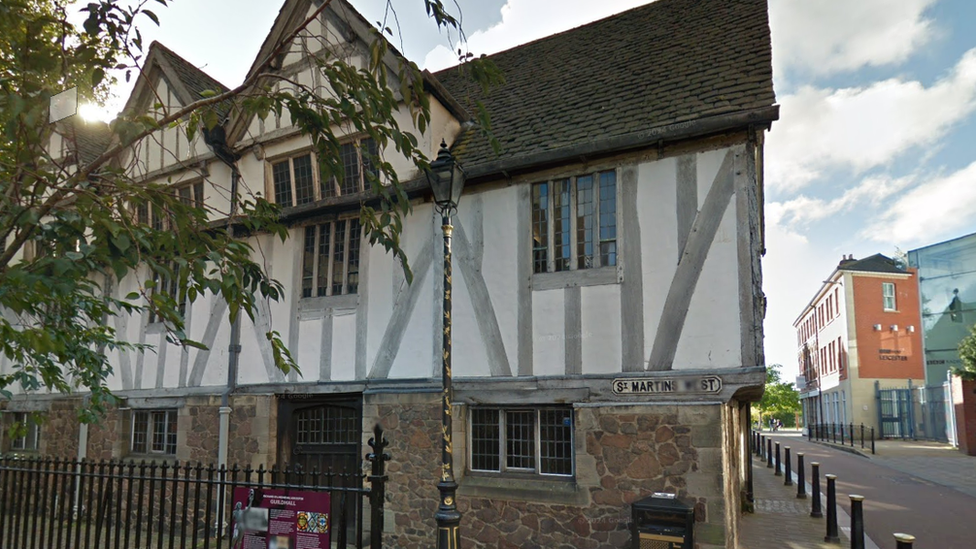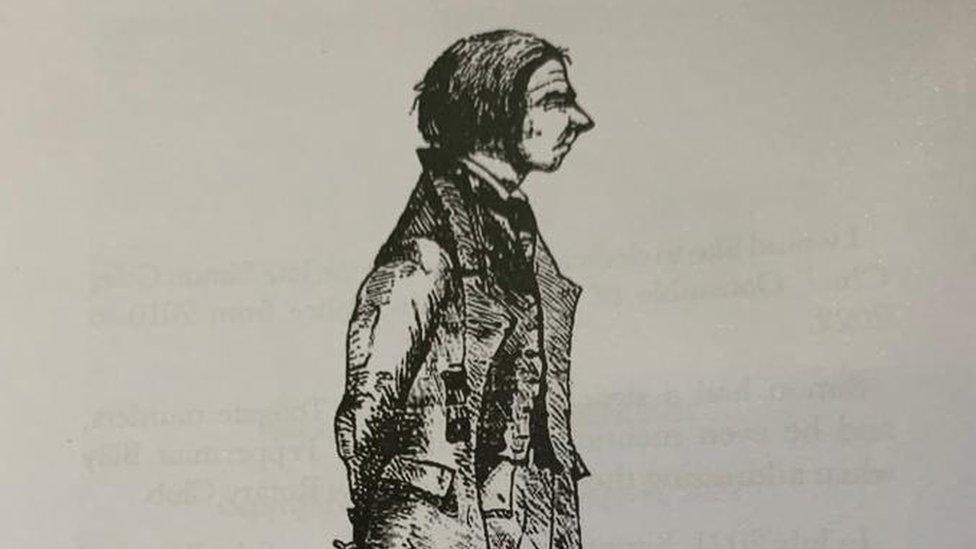Should Leicestershire woman Hannah Read have hanged for 1825 murder?
- Published

Hannah Read was hanged outside the Bridewell women's house of correction in 1825
The trial of a woman who was hanged for murder is to be re-enacted 200 years after she was sent to the gallows.
Hannah Read was executed, then dissected for medical research, after being found guilty of killing her husband, James, near the Leicestershire village of Foxton in April 1825.
However, Leicester historian Jo Vigor-Mugovin said she believes the mother-of-six should, perhaps, have escaped the noose.
"It's a fascinating case," she said.
"I have done a lot of research, and I really do think there is doubt over whether Hannah did murder James.
"I want to test the evidence again and see whether a mock jury reaches the same verdict as the 12 men who convicted Hannah two centuries ago."

James Read's body was found near Foxton Locks
BBC radio presenter Ben Jackson has agreed to play the part of the judge, and Ms Vigor-Mungovin will portray Hannah Read, alongside other actors, in the recreation of the case.
It will take place at Leicester Guildhall on 26 April next year - exactly 200 years after James Read's death.
Hannah Read was 35 when she was hanged outside the former Bridewell women's house of correction, in what is now Infirmary Square, in Leicester.
She had been accused and convicted of killing James, a former soldier, whose body was found in the water near Foxton Locks.
"The case against her was that she was the last person to have seen him alive," said Ms Vigor-Mungovin.
"They lived in Shearsby and had gone for a walk along the canal.
"Hannah said James had become angry and run off towards Debdale Wharf.
"She returned to the village to raise the alarm, but his brother accused her of murdering him, and she was arrested, tried, and executed."

Jo Vigor-Mungovin said she wanted to give Hannah Read "a voice" 200 years after her trial
"Hannah and James did not have a happy marriage," Ms Vigor-Mungovin said.
"She had two illegitimate children, and three by James. They lived a very poor life, and at one point he vanished for years abandoning the family entirely.
"Hannah moved to Shepshed and started a relationship with a younger man, with whom she had another child.
"She thought her husband was gone forever, but he returned, and when he he did, the people of the village demanded she go back to him because then a wife was considered the property of her husband.
"Hannah was forced to return to him, though she did not want to and had said she would kill him."
Ms Vigor-Mungovin added: "Nobody knows what happened on that walk. They may have fought, and Hannah defended herself. He may have fallen into the water and injured himself.
"What we do know is Hannah Read had no-one to defend her at that trial. She just stood there and accepted what the judge and jury said.
"I want to give Hannah that voice she did not have in court."

Leicester's 14th Century Guildhall will be used to restage the trial
Ms Vigor-Mungovin, who admitted being fascinated by historical murders, oversaw a similar mock trial last year when a modern jury was asked to reconsider the evidence against William "Peppermint Billy" Brown.
Brown was the last man publicly hanged in Leicester, in 1856, for the gruesome double murder of a 70-year-old man and his grandson.
A 21st Century jury, hearing readings from court transcripts in the reconstructed case, decided to 'acquit' the unfortunate Brown.
"I'm not saying we will get a different verdict for Hannah, but it will be an interesting experiment," Ms Vigor-Mungovin said.
"And we might find out how differently society treats women today to 200 years ago."

Follow BBC Leicester on Facebook, external, on X, external, or on Instagram, external. Send your story ideas to eastmidsnews@bbc.co.uk, external or via WhatsApp, external on 0808 100 2210.
- Published16 July 2023

- Published19 January 2020
